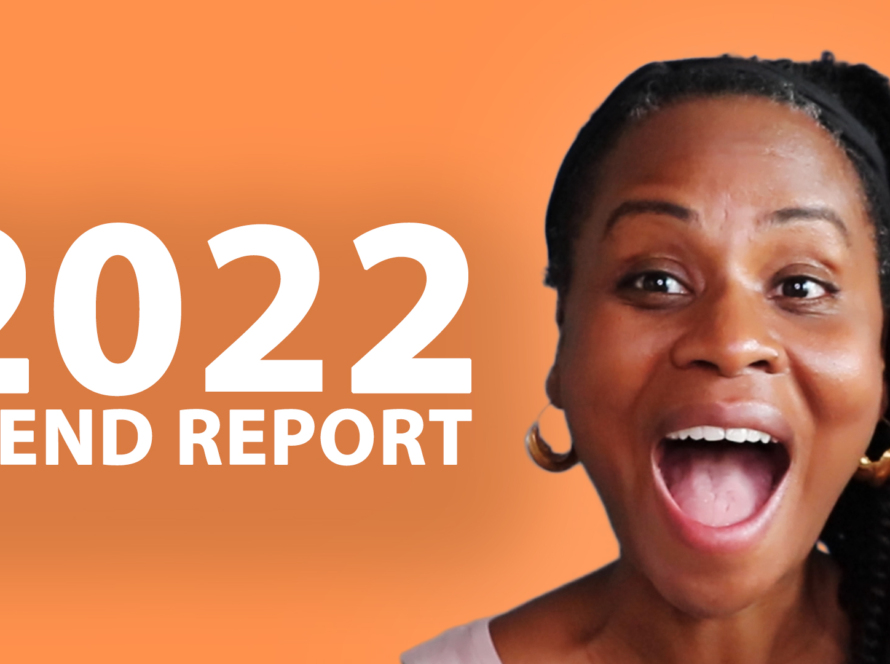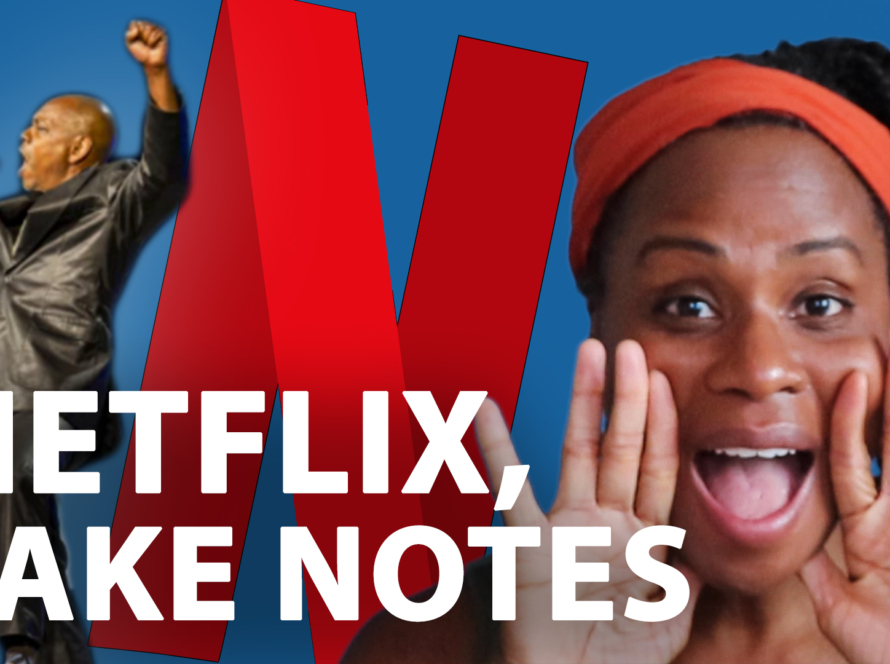It’s hard out here in these streets. Have you ever felt that way about going to work? I remember towards the end of my corporate career, I used to have to sit in the parking lot for like 20 minutes or something once I got to work, and talk myself into getting out of the car, going into the building, going up the stairs, and sitting down and doing the work. It got so bad that there were some days I had to leave and go sit in my car again during lunch so I can decompress and just reset during the day.
You can make it so that people on your team don’t have to feel that way. I’m Sonia Thompson, and through my speaking, writing, content, and programs, I’ve guided hundreds of thousands of people all around the world on how to build an inclusive brand that wins the attention, adoration, and loyalty of more consumers, especially those most brands ignore. So let’s dig into three ways you can create a safe and inclusive environment where everyone on your team feels like they belong.
Microaggressions in the workplace
I like to think of microaggressions like little pinches or punches that someone might be giving by things that they’re saying or doing. Now, you might think that pinches might not be something that is so serious. About a year ago, my daughter, she went through a bit of a pinching phase, so she would pinch, pinch, pinch, pinch my mom, and you wouldn’t think that pinches, especially from a baby, would cause much harm, but sometimes my mom would look at her arms later on and she’d notice that there’d be bruises, and those bruises, sometimes they’d be a little tender to touch.
What are microaggressions?
Microaggressions are whenever you say things over and over and over again, they’re like little digs that you’re giving to people that cause them harm. You might not be able to see it initially, you might not be able to always see the impact, but it’s definitely there. So microaggressions are like commenting on someone’s appearance, you’re commenting on their hair, you’re commenting on their clothes, you’re commenting, in particular for a person of color, on how articulate you think they sound. These are things where sometimes you may not realize that you’re causing harm, but for the person on the receiving end, it’s like, pinch, pinch, pinch, punch, punch, punch, and over time, it just makes for a toxic work environment for them.
The impact of microagressions in the workplace
Now remember, microaggressions can be committed whether or not the person who is delivering them knows that they are committing them. So you can be causing harm to somebody even if you don’t intend to, and even if you don’t know that you’re doing it, that doesn’t mean that the impact on the other person is lessened in any way, so we’ve all got to become aware of what common microaggressions are, and what they are for the people on our teams, so we can make sure that we’re not committing them and causing harm to them over time in a manner that makes them not feel like they belong within our team.
How to stamp out microaggressions in the workplace
Stamping out microaggressions from your company culture are absolutely essential for you to be able to create an environment where everyone on the team feels safe. Think about it, would you want to go to a place every single day where you are constantly getting pinched or punched? That’s not really an environment that you want to continue to put yourself in on a regular basis. Eventually you’re going to say, “Hey, I’ve had enough of this,” and you’re going to steer clear and you’re going to give “Peace out” and leave. That’s the same thing that’s going to happen with the people on your team. That’s not what we want.
So how do you stamp out microaggressions? Make sure you’re creating very clear policies on your team, letting them know what types of behaviors will and will not be tolerated, then make sure that you are holding the line so that people know that you mean business. And if people are committing microaggressions and they’re not knowing that they’re doing it, you can make sure that you implement some surveys, create some town halls, talk to people informally, or even formally, to find out if there are common microaggressions that have been committed, or that are happening on a regular basis, and then you can work to create an ongoing dialogue within your team to make sure that people know these types of things are unacceptable to say, and these types of things cause people harm, and we’re going to steer clear of that.
Making sure that you don’t just assume that people will know what they should and shouldn’t say isn’t going to lend itself to making sure that everybody is compliant with creating the culture that you identify, so wherever possible, be as clear as you can as to what types of things are unacceptable and which types of things are, and if you’re not sure, spend some time getting to know the people on your team even better and understanding if there have been things that have been said that have been causing harm, and use that to help fuel your communications.
Have you ever experienced a microaggression at work? I’m super curious, drop me a line in the comments below and tell me all about it.
Prioritize psychological safety in the workspace
The second thing to do to create a safe and inclusive working environment is to make sure that you prioritize psychological safety. People need to feel comfortable speaking up and saying what’s on their mind and their heart. They need to know that groupthink is not why they are there, there to bring their ideas, to bring their experiences, and to be able to contribute in a way that makes the team better, that advances the progress that the team is making. If somebody feels like they can’t speak up, or they’ll be reprimanded if they disagree with what everybody else is thinking, or they can’t express how they’re feeling about a policy, plan of action, or whatever is going on, that’s not a good environment for them to be in.
Disney Pixar does a wonderful job of making people on the team feel very comfortable speaking up, providing their points of view, and even dissenting from others on a regular basis, and they’re doing this, of course, to make their end product better. They actually have meetings where they’ve got a number of people from all different areas coming in, trying to tear apart a project, not just to tear people down, but to add some rigor to the creative process that enables the team to challenge every decision that they’re making, and it pushes the team collectively further to be able to create something that’s even better than any one person can do on their own.
Having those discussions, having those forums where people are not only getting comfortable sharing their feedback, sharing their opinions, but also receiving feedback or receiving some insights from somebody that might differ from something that they’ve already done, gets people in a position where they’re comfortable speaking up, where they’re comfortable sharing ideas, and it brings a team together because they all know that they’re doing it for the greater good of the product that they’re creating and for the people that they are serving.
Get in the habit of creating environments where the people on your team are comfortable speaking up, comfortable letting their voices be heard, where they know that their opinion is not only valued, but sought out. The more you do that, the more people will develop a degree of safety in knowing that they do belong, and that what they have to say and their experiences that they bring to the table will make everyone better whenever they share it.
Elevate the value of differences in the workplace
And the third thing that you can do to build a safe and inclusive environment where everyone on the team feels like they belong is to elevate the value of differences. Take the time to ensure your team knows that differences are a point of strength. The goal is to not create a culture that’s like a melting pot, where everyone comes in as distinct individuals with unique cultures, backgrounds, ways of being, and then they’re dumped into this big pot of boiling soup, and then all the individuality just kind of goes out the door, because what you’re left with is like this big blob, it’s undecipherable of who the individuals are.
Rather, you want to create an environment that’s more like a mosaic, where you still have something that’s beautiful whenever you connect everyone together, it works and it completes its function, but people are still able to maintain their individuality, and it’s their individuality and their uniqueness that makes the team better as a result, not sort of that melting pot, where everyone is just kind of losing the uniqueness of who they are for the purposes of fitting in. That’s not what we want. Fitting in, no, feeling like you belong, good.
I remember back in my corporate days, I had our chief marketing officer that I was working with, she told me, “Sonia, you have a voice, we need to hear it,” because I was so busy deferring to everyone else, trying to make sure that I wasn’t messing up, trying to make sure that I was getting everything right and situated, but in the process of doing that, I had left parts of myself, and the benefits of what made me a good leader, of what made me an asset to the team. So the more I started to use my voice, the more I felt like I belonged, and that my differences, my unique perspective, mattered.
Inclusive Brand Starter Kit
If you’d like even more resources on how to get started building an inclusive brand, head on over to inclusivemarketing.co/starter-kit, and grab my Inclusive Marketing Starter Kit that will get you going.
Don’t forget to drop me a line in the comments and tell me all about a microaggression that you have experienced so that we can help share and educate others on what they shouldn’t be saying and doing to other people.
Until next time, remember, everyone deserves to have a place where they belong. Let’s use our individual and collective power to ensure more people feel like they do. Ciao for now, see you soon.
Work With Sonia Thompson
Sonia is an Inclusive Marketing Strategist for brands looking to make their customers feel understood, valued, seen, and like they belong.
Inclusive Brand Intensive: Prefer a done with you approach to building an inclusive brand? Let’s spend the day together co-creating a plan for you to win the attention, adoration, and loyalty of diverse and underserved consumers.
Consulting & Custom Training: Let’s work together to equip you and your team to build an inclusive brand. Whether its training your team on inclusive marketing principles, co-creating the specifics of what building an inclusive brand looks like in your business, or getting insights to deepen the degree of customer intimacy you have with the people you serve and want to serve, we can build a custom plan that works for you, your team, and your business.



